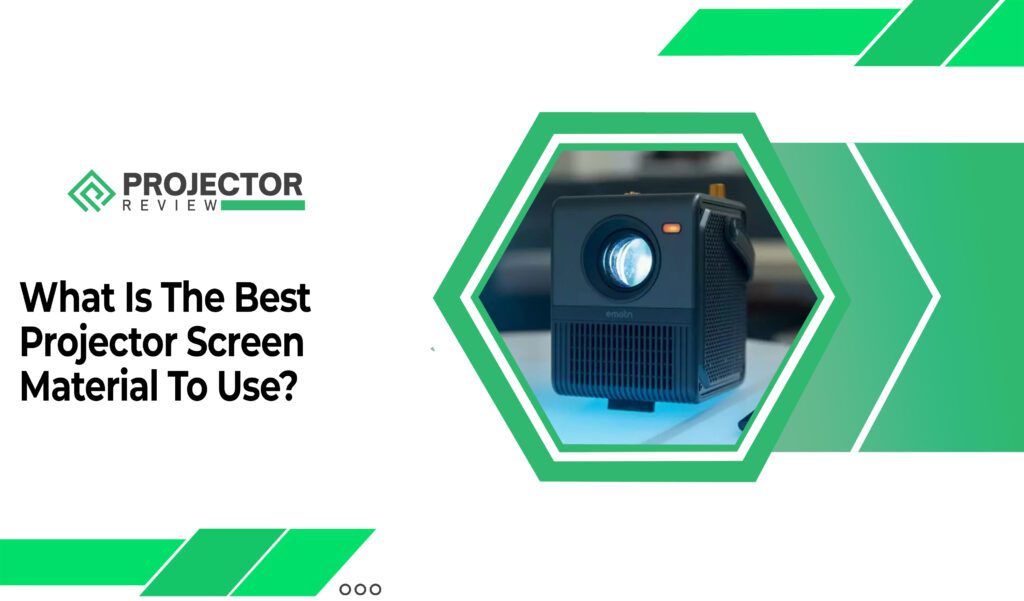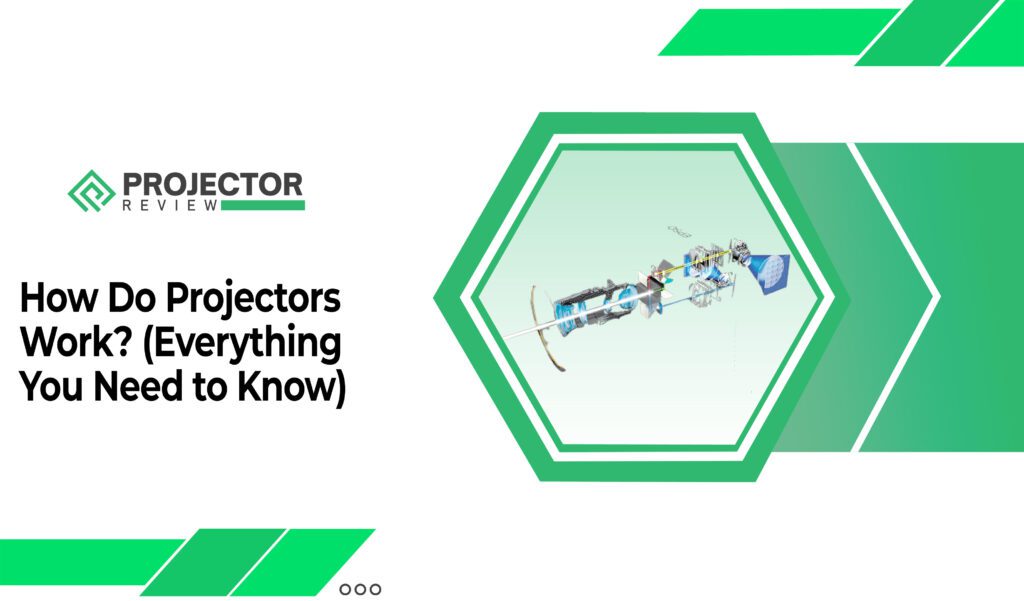Have you ever wondered if projectors emit blue light, and if so, what effects it might have? So, you are on the right site to explore!
You must know how to hang a projector screen. Projectors, those devices that display images and videos on screens or walls, are commonly used for presentations, movie nights, and more.
Blue light has gained attention due to its potential impact on our eyes and sleep patterns. We’ll explore whether projectors contribute to this concern and if there are ways to mitigate any possible effects.
At the end of our article, you’ll be able with a clearer understanding of the role of blue light in projectors and how it might relate to your visual and overall well-being.
Does the Projector Emit Blue Light?
Yes, projectors do emit blue light as part of their overall light spectrum. Projectors generate light by using various technologies, such as lamps or LEDs, to produce white light, that’s why you have to know properly about how to install a projector screen in your home.
This white light is then split into its different color components, including red, green, and blue, which are recombined to create the full range of colors needed for the projected images.
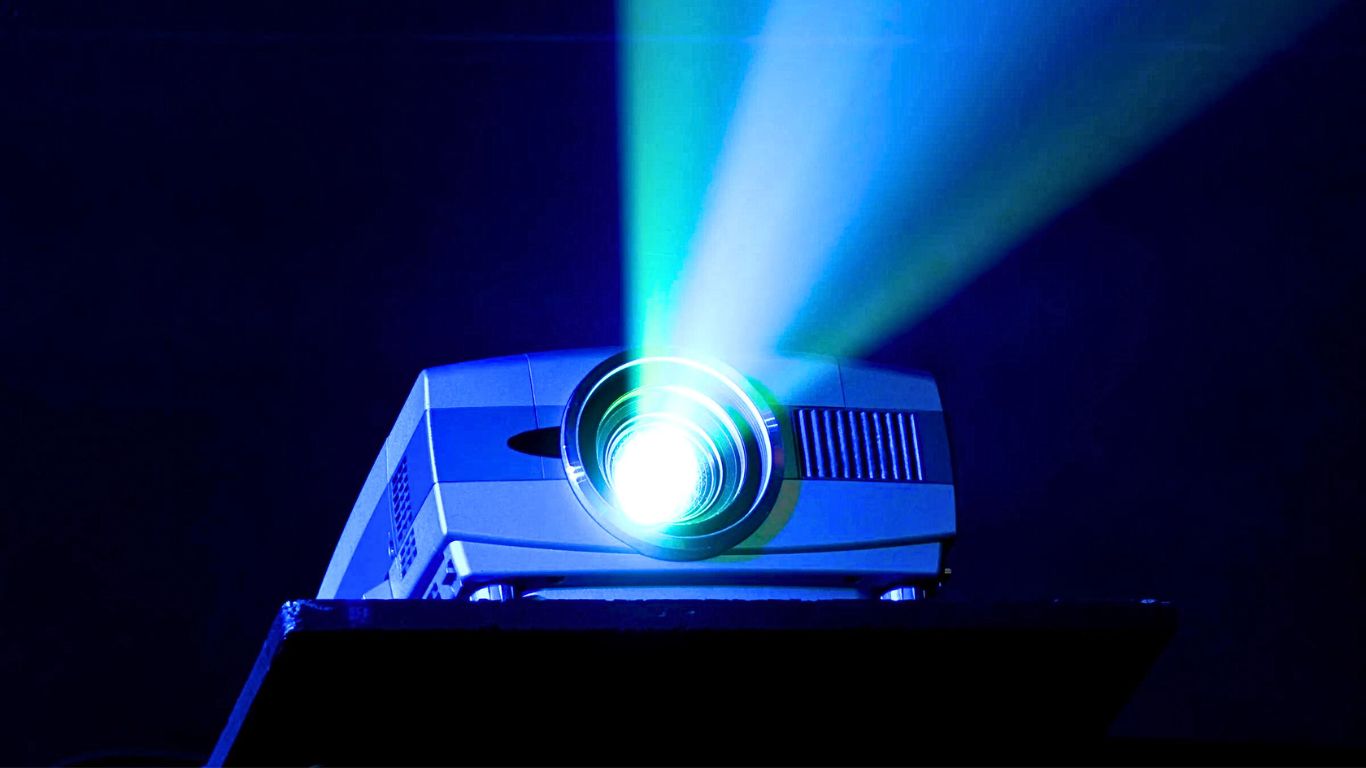

While projectors do emit blue light, the amount and intensity can vary depending on the type of projector and its technology. Some modern projectors and devices incorporate features to reduce the intensity of blue light emissions, such as “blue light filters” or “night mode” settings. These features aim to make viewing more comfortable, especially during extended periods.
Do Projectors Emit UV Light?
Yes, some projectors can emit a small amount of ultraviolet (UV) light as part of their light spectrum. UV light is also present in white light, along with visible colors like red, green, and blue.
However, the amount of UV light emitted by projectors is generally considered to be very low and not harmful to human health, especially when compared to direct sunlight or other UV sources.
Modern projectors are designed with safety in mind, and manufacturers take precautions to minimize any potential UV emissions you just have to know how many Lumens for the outdoor projector. Additionally, the projector’s projection surface, which could be a screen or wall, often absorbs or scatters UV light, further reducing any possible exposure.
It’s important to note that UV light from projectors is not typically a major concern for users. However, if you have specific health sensitivities or concerns, you can refer to the manufacturer’s specifications for the projector you are using to learn more about its emissions and safety features.
Is a Projector Harmful to the Eyes?
Projectors themselves are not inherently harmful to your eyes, it could be clear by knowing actually how projectors work. However, like any electronic display device, improper and prolonged usage can lead to eye strain and discomfort.
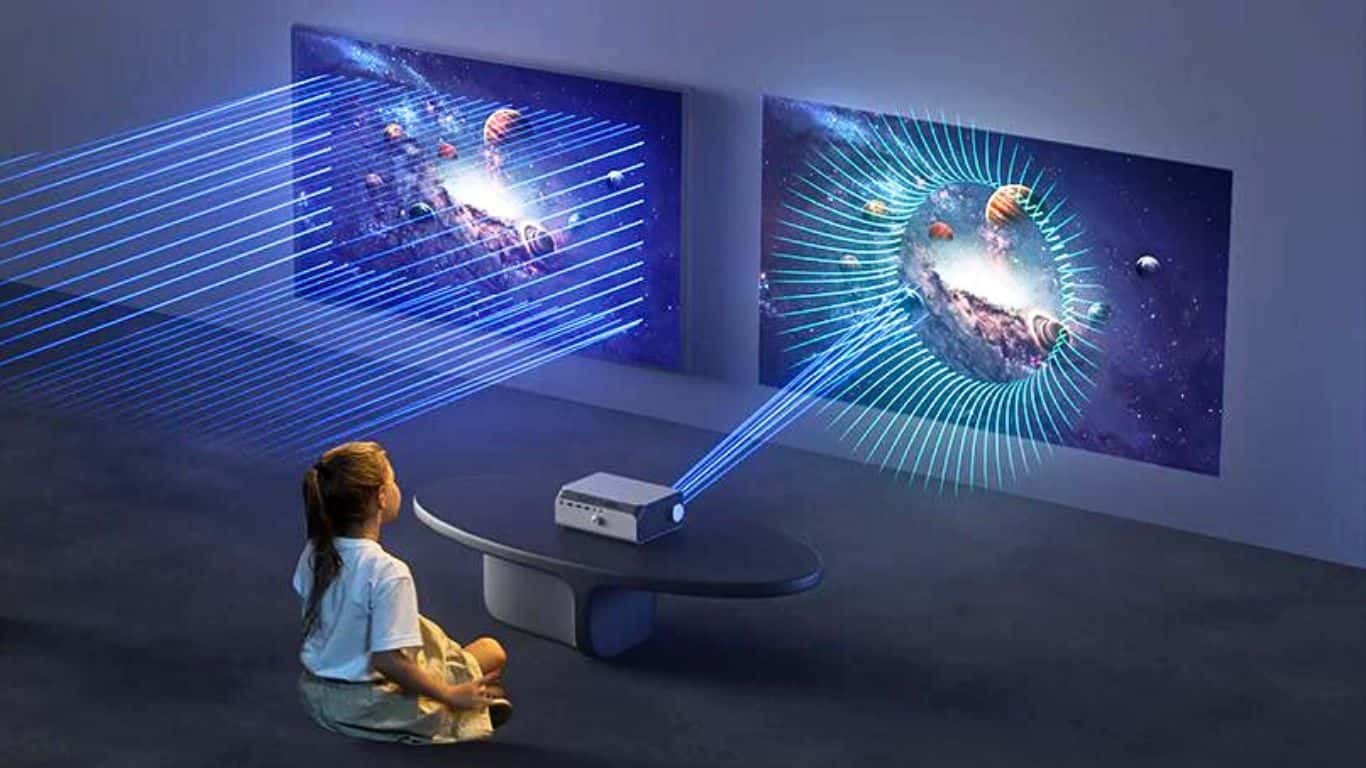

Here’s a detailed explanation:
Digital Eye Strain
Prolonged use of projectors, especially in poorly lit environments, can cause digital eye strain. The continuous focus and refocusing required while watching content on a projector can contribute to these issues.
Brightness and Glare
Devices when set to high brightness levels, can produce glare that may cause discomfort and strain. This glare results from light reflecting off the screen or other surfaces, leading to increased light sensitivity and potential discomfort.
Ergonomics and Viewing Distance
Incorrect projector placement or improper seating can lead to poor ergonomics, which can strain your neck, shoulders, and eyes. Viewing content from an uncomfortable distance or angle can contribute to eye fatigue.
How can Blue Light Damage the Eyes?
Blue light, which is a component of the visible light spectrum, is emitted by various sources including digital screens, smartphones, tablets, and some artificial lighting. While blue light is not inherently harmful, prolonged and excessive exposure to it, especially in the evening or nighttime, can potentially have negative effects on eye health and overall well-being. Here’s how blue light can impact your eyes:


Digital Eye Strain
Staring at screens emitting blue light for extended periods can cause digital eye strain, also known as computer vision syndrome. This can lead to symptoms like dry eyes, blurry vision, eye discomfort, headaches, and difficulty focusing which you can fix with the best projector screen size.
Disruption of Sleep Patterns
Blue light, particularly the blue light emitted by screens, can interfere with the body’s natural circadian rhythm by suppressing the production of melatonin, a hormone that regulates sleep. This can lead to difficulty falling asleep and disrupted sleep patterns.
Retina Damage
Some studies suggest that prolonged exposure to high-intensity blue light might contribute to damage to the retinal cells in the eyes over time. This has raised concerns about the potential long-term impact on vision health, including age-related macular degeneration (AMD).
Increased Light Sensitivity
Blue light exposure can lead to increased sensitivity to light, a condition known as photophobia. This can result in discomfort when exposed to bright lights.
Is a Projector Better than a TV for the Eyes?
Whether a projector or a TV is better for your eyes depends on various factors, and there is no one-size-fits-all answer. For the proper comparison, you should be aware of how many watts a projector use. Both projectors and TVs have their advantages and considerations when it comes to eye comfort. Here’s a breakdown to help you understand:
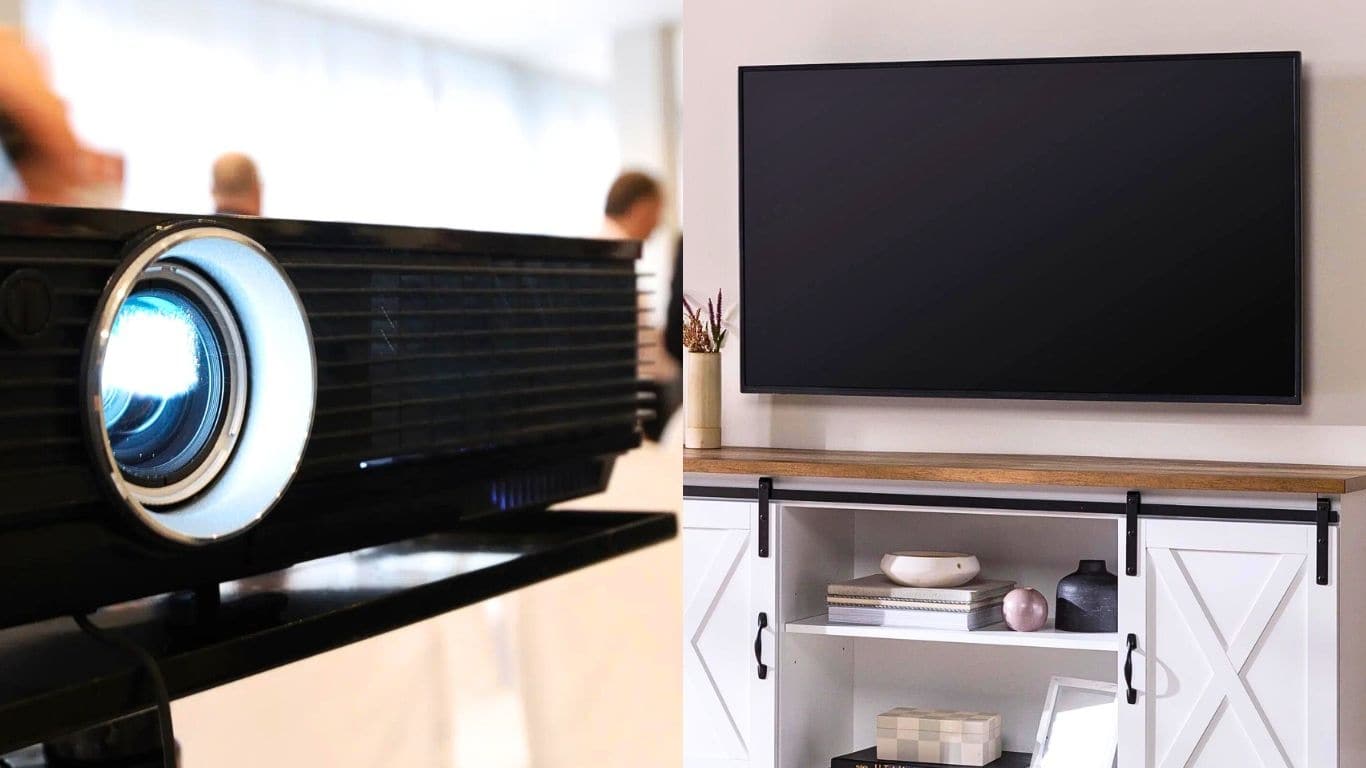

Projectors
Advantages
- Projectors can create much larger images than TVs because of screen size, offering a more immersive viewing experience. This can be less straining as it allows your eyes to move and focus more naturally.
- Projectors often reflect light off a screen or wall, which can reduce direct glare and contribute to a more comfortable viewing environment. You can get more benefits when you’ll know, what is contrast ratio in a projector.
- Some projectors have settings to reduce blue light emissions, which can help mitigate potential impacts on sleep patterns and eye strain.
Considerations
- Projectors require controlled lighting conditions for optimal performance. Too much ambient light can reduce image quality and lead to strained eyes as you try to see the projection.
- Proper seating and distance from the screen are important to avoid discomfort and strain.
TVs
Advantages
- TVs offer consistent image quality regardless of lighting conditions in the room according to wavelength. You don’t need to control ambient light as meticulously as with projectors.
- TVs are more suitable for smaller rooms where projecting a large image might not be feasible.
Considerations
- Larger TVs might still be smaller than a projected image, potentially requiring more eye movement to follow the content.
- The direct emission of light from a TV screen can contribute to glare and potentially cause more eye strain, especially in dimly lit rooms.
Is the Projector causes Cancer?
There is no scientific evidence to suggest that projectors can cause cancer. Projectors are electronic devices that emit light to create images on screens or surfaces.
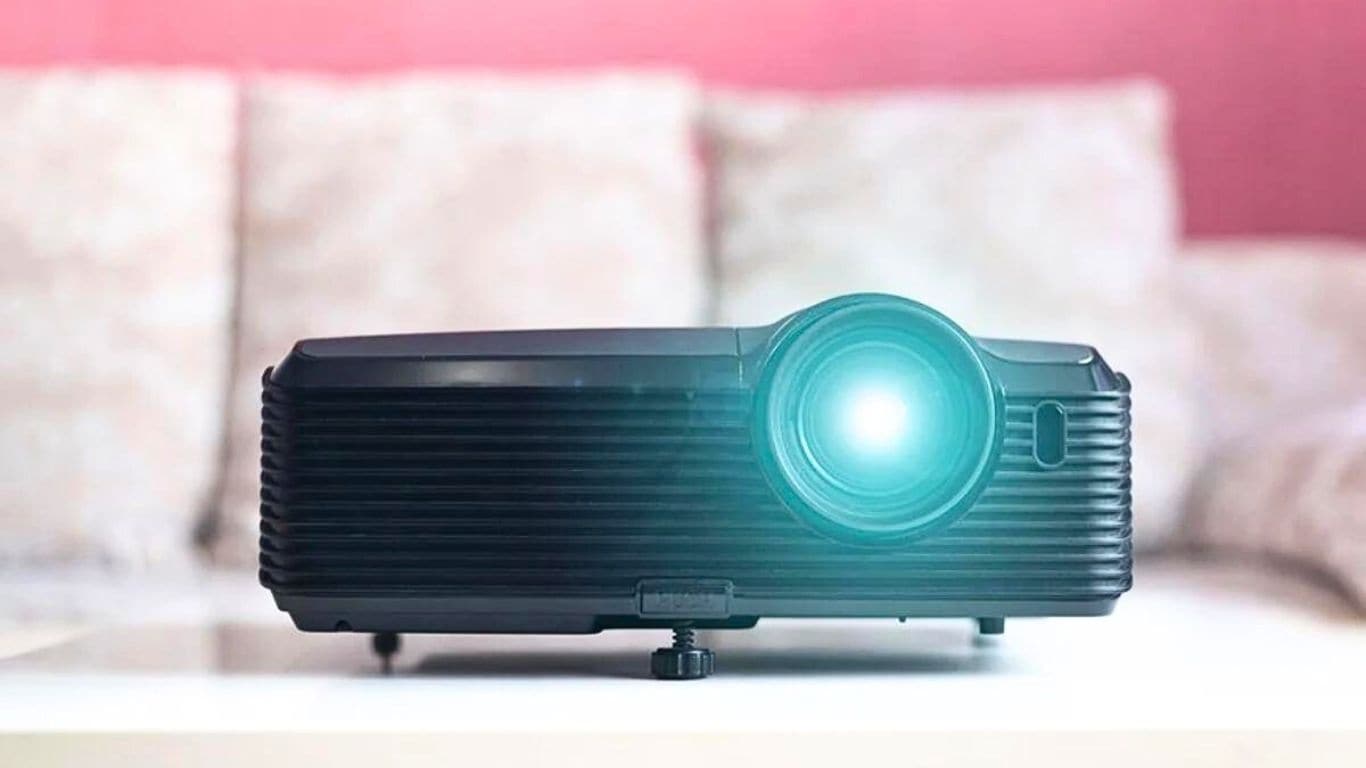

Cancer is typically caused by genetic mutations that lead to uncontrolled cell growth. In the context of electronic devices like projectors, the type of light they emit and the electromagnetic fields they produce are not known to directly cause these genetic mutations.
However, it’s important to note that the research landscape is always evolving, and new studies or findings may emerge, for more care set your device to the best daylight projector. As of now, regulatory bodies and health organizations, such as the World Health Organization (WHO) and the International Agency for Research on Cancer (IARC), have not classified projectors as cancer-causing agents.
Tips to keep your eyes save
Certainly, there are several steps you can take to help protect your eyes from potential damage caused by blue light exposure but first try to choose the best projector screen material, especially from digital screens and devices. Here are some tips:
- Use Blue Light Filters
Many devices and operating systems offer built-in blue light filters or “night mode” settings. Enable these settings to reduce the intensity of blue light emissions, especially during the evening hours.
- Take Regular Screen Breaks
Follow the 20-20-20 rule: Every 20 minutes, look at something at least 20 feet away for about 20 seconds. This practice helps relax your eye muscles and reduce digital eye strain.
- Consider Blue Light Blocking Glasses
Blue light filtering glasses with special coatings can help reduce the amount of blue light reaching your eyes. These glasses are particularly useful if you spend extended periods in front of screens.
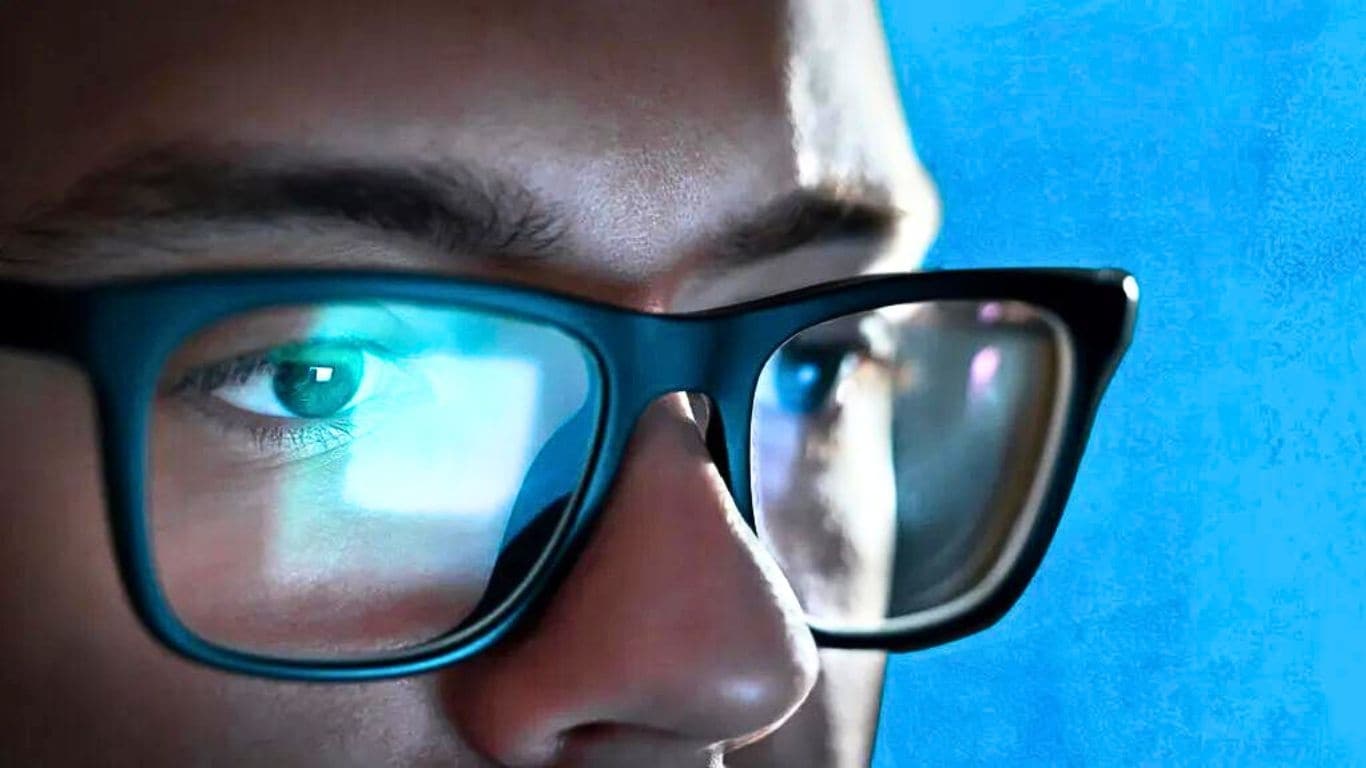

- Control Lighting
Maintain balanced lighting in the room. Avoid excessive brightness that causes glare on screens and reduce ambient light during evening screen use.
- Adjust Screen Settings
Reduce screen brightness and increase text size to make viewing more comfortable. Many devices also allow you to manually adjust the color temperature to warmer tones in the evening. It will help you to know how long projectors last.
- Use Anti-Reflective Coatings
If you wear eyeglasses, consider getting lenses with anti-reflective coatings. These coatings can reduce glare from screens and improve overall clarity.
- Consider Screen Filters
Attach screen filters to your devices to reduce blue light exposure and glare.
- Regular Eye Exams
Schedule regular eye exams with an optometrist to monitor your eye health and address any concerns.
Do Projectors Have Blue Light – FAQs
Conclusion
Drawing upon expert insights and experience, it sheds light on the significance of lumens and the choice between DLP VS LCD projectors. By proper observation of the intricate interplay of brightness and image quality, readers gain a comprehensive understanding of how ANSI lumens VS Lumens influence projection clarity.
Furthermore, the comparative analysis between DLP and LCD technology empowers individuals to make informed decisions tailored to their preferences and needs. As technology evolves, leveraging this expert knowledge ensures that users can optimize their viewing experiences while prioritizing visual health and well-being.
